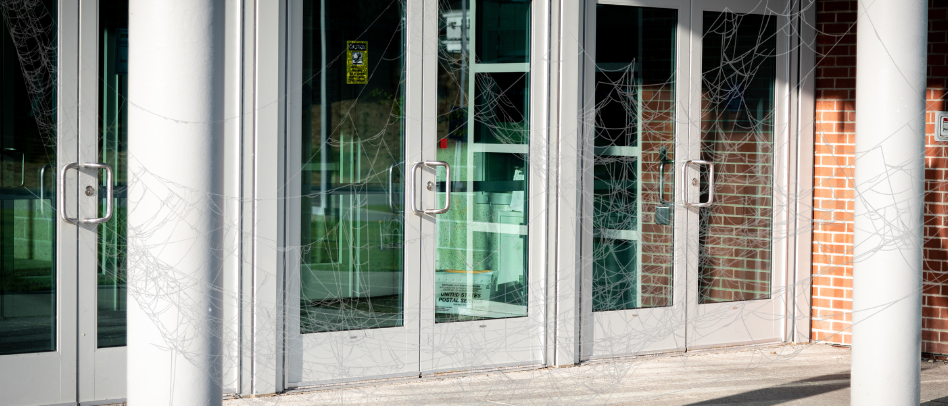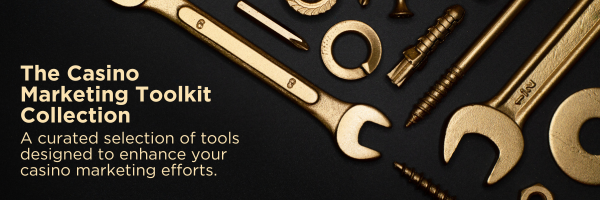For years, “No New Customers” was a useful rallying cry. It reminded casino marketers to stop chasing strangers and focus on nurturing the guests they had already earned. I still believe in the discipline behind that mindset. But my thinking has matured—because so has the industry, the customer, and the competition.
Here’s what I’ve learned: Loyalty isn’t a promo calendar, and brand isn’t a paint job. Loyalty is the operating system that turns your brand promise into repeatable, profitable behavior—on property, online, and in your community.
You don’t have a “new vs. existing” customer problem. You have a depth problem.
Here’s what that costs you: If your average regular visits twice a month, but competitors capture one of those visits, you’re leaving 50% of potential revenue on the table. Multiply that across your database, and the number gets uncomfortable fast. This isn’t about loyalty in theory. It’s about the profit you’re handing to competitors because your relationships lack depth.
Depth of relationship. Depth of relevance. Depth of earned preference that outlasts the next mailer from across town.
Here is your blueprint to solve for depth—a roadmap beyond toolbox tactics that positions brand and loyalty as the core engines of regional casino growth.
The Shift from Offers to Operating System
Most regional casinos run loyalty like a monthly fire drill: bigger offers, louder promotions, more aggressive reinvestment. Meanwhile, your regulars split their time between you and two competitors, chasing the best deal of the week.
The alternative? Build loyalty that operates at three levels:
- Functional: Consistent value, frictionless experience, clear benefits
- Emotional: Recognition, belonging, feeling known
- Identity: “This is my place, these are my people”
When loyalty becomes your operating system—not just your offer calendar—every touchpoint reinforces why customers choose you over the casino 15 minutes closer to their house.
Start with a Brand Ladder—and use it to tune loyalty mechanics
A brand ladder connects features to benefits, then to emotions and values. Most casinos get stuck on features (“loosest slots,” “newest games”) and wonder why reinvestment keeps climbing while loyalty stalls (or slides).
A brand ladder could be the difference between telling customers what you have and showing them who they become when they’re with you.
Here’s how the ladder works in loyalty:
- Functional: Low-friction play, consistent offers, easy earn and burn.
- Emotional: “They know me. I feel like a regular.”
- Values and Identity: “This place reflects who I am—welcoming, fair, part of my week.”
Most regional casinos have the functional layer covered. The challenge is in climbing to the emotional and identity layers.
Here’s how to build and deploy your ladder:
Functional (What You Do):
- Fast, accurate comp calculations
- Consistent free play on Tuesdays
- Reserved parking for top tiers
Emotional (How They Feel):
- “The slot attendant remembers I like my coffee black, no sugar.”
- “I don’t have to explain my usual when I call the host.”
- “They notice when I haven’t been in for two weeks.”
Values/Identity (Who They Become):
- “I’m not just another player here—I’m part of the Tuesday morning crew”
- “This casino supports the same local causes I care about.”
- “My comp dollars work at the steakhouse that sponsors my kid’s little league”
Quick Implementation: Draft a one-sentence Brand Promise for Loyalty. For example: “We make regulars feel locally famous.” Post it everywhere. Use it to evaluate every offer and benefit. Kill any benefit that doesn’t ladder up to it. If a promotion drives visits but undermines that promise, it’s a short-term gain with a long-term cost
Accept the Multi-Casino Reality (And Win Anyway)
Your customers aren’t cheating on you—they’re optimizing their entertainment spend. Every player has three casino apps on their phone. Accept this reality and focus on owning specific moments:
- Thursday poker night
- Sunday brunch slots
- First-Friday payday celebrations
- Pre-concert dinner and play
Instead of trying to capture 100% of their visits, focus on owning 100% of their best visits. Be the casino they choose for birthdays, the one they bring out-of-town guests to, the one where they know the staff by name.
Build a Loyalty Flywheel (Brand → Data → Experience → Advocacy)
Loyalty isn’t static. It’s a flywheel that gains momentum as each part feeds the next. When you connect these four components, loyalty becomes self-reinforcing.
Brand → Data → Experience → Advocacy → Brand (and round you go)
- Brand draws trial with a clear promise.
- Data personalizes experience, not just their offers.
- Experience delivers micro-moments that prove the promise.
- Advocacy turns regulars into promoters.
Most casinos stop at step two. They use data to optimize mail offers and call it personalization. But personalization isn’t about what you send—it’s about what you anticipate and deliver when they walk through the door.
Measure What Matters:
- Depth Metrics: Visit frequency lift, time on device increase, multi-location visits
- Health Metrics: ADT trends by segment, reinvestment efficiency, retention by 30/60/90
- Advocacy Metrics: Player referrals, social mentions, voluntary review scores
The flywheel gains momentum when each rotation strengthens the next. One player bringing a friend is worth ten billboard impressions.
Segment by Relationship Stage, Not Just Worth
Classic worth segments still matter. You need to know who your high-value players are. But segmentation by relationship stage unlocks more targeted loyalty moves. It tells you not just who they are, but where they are in their journey with you—and what they need next.
Hosted Players (high worth, low frequency): These guests need fewer, bigger moments. Track trip quality and forward bookings, not just visit count. One exceptional weekend matters more than three average Tuesdays.
High-Frequency, High-Worth: Your loyalists. Focus on friction removal and recognition. They don’t need more offers—they need to feel seen.
Mid-Worth: Clarify rewards and encourage habit formation. This segment often doesn’t understand the path to the next tier. Make progression visible and rewarding.
Low-Worth, High-Frequency: Cap reinvestment; offer community perks instead. These guests love the social aspect. Give them reasons to stay that don’t drain the P&L.
Retail Un-Carded: Solve this as a content and on-ramp issue. They’re not avoiding your program—they don’t understand the value. Prioritize clarity over complexity.
Quick move: Assign each marketing leader one segment for 90 days. Require weekly readouts on what moved and what didn’t. This builds muscle memory for relationship thinking.
Replace More Offers with Moments, Mechanics, and Messaging
When retention sags, the default response is often “send more mail” or “boost free play.” That’s not a loyalty strategy. That’s volume masking as a strategy.
Instead, think in three layers:
Moments (Experience Design)
Moments are the interactions that define how loyalty feels. Identify the three moments that matter most to your guests, such as:
- First 10 minutes on the property: how are they greeted? Does the valet remember them? Does a host text “welcome back”?
- First jackpot of the month: is it celebrated or just recorded? Is there a winners wall (even for small hits)? Is there a social media shoutout (if they want it)?
- First host touch post-enrollment: does it feel transactional or welcoming?
Design these moments deliberately. Script them. Measure them. They cost almost nothing and change everything. And don’t forget The Recovery Touch. After a rough session: “Coffee’s on us tomorrow morning”. It’s not about the value but about being seen.
Mechanics (Program Design)
Mechanics are the rules that shape behavior. Simplify tiers and clarify the progression path. Customers shouldn’t need a decoder ring to understand what they’re earning or how to use it.
Add streak bonuses for habit formation. Reward three consecutive weeks of play, not just total spend. Visit 3x in 10 days, unlock surprise benefits. Introduce community credits redeemable at local partners—this extends your brand beyond your four walls. These partnerships could be beneficial if you lack enough amenities.
Messaging (Brand Voice)
Messaging is how you narrate the experience. Skip generic superlatives. Speak like a neighbor, not a billboard (unless you are writing FOR a billboard…IYKY). Advance one narrative across channels. This isn’t about repetition but chapters of the same story.
If your brand promise is about local belonging, your messaging should reflect the community calendar, local partnerships, and the people who make your property feel like home.
- Skip “Valued Guest” for “Hey, Mike”
- Mention the team’s win last night
- Reference the construction on Route 9 everyone’s complaining about
- Text like their friend, not their bank
Tighten Reinvestment with a Brand Filter
Reinvestment is not affection. It’s math. And too many casinos are subsidizing behavior they’ll never be able to sustain.
Apply a brand filter to every reinvestment decision:
- Does this promo drive visits but erode trust? If the answer is yes, it’s a short-term gain with a long-term cost. Aggressive loss rebates or opaque bonus structures might spike traffic this month, but they train customers to wait for the next deal and distrust the value of regular play.
- Are we prioritizing felt and seen benefits over pure discounts? Recognition, convenience, and access outperform discounts in building lasting loyalty. The customer who is greeted by name, seated faster, or invited to an exclusive event values those experiences more than another $20 in free play.
- Do we have internally published reinvestment bands by segment? Know what you’re willing to spend to retain each tier. Audit weekly.
Modernize Communications Without Abandoning What Works
The best loyalty strategies don’t replace what’s working. They stack new tools on top of proven ones. Here’s how to think about your communication channels:
Mail: Still your anchor. Use it to establish value and give reasons to visit, but stop treating it like a solo act.
Email: Advance weekly stories plus utility. Share what’s new, who won, and what’s coming. Build narrative, not just offers.
SMS: Real-time fills and pivots. A last-minute concert ticket. A slot tournament with open seats. Use it sparingly and with urgency.
Social and UGC: Spotlight regulars, local partnerships, and your property’s personality. This is where you build affinity with the segment that’s not yet loyal but could be.
The mistake most casinos make is treating these as separate channels with separate strategies. Instead, orchestrate them. One story, told across four chapters, week after week.
Run a 90-Day “Depth Sprint”
If you’re reading this and thinking, “This all sounds great, but where do I start?” Run a 90-day sprint focused entirely on depth. Not acquisition. Not new promotions. Just depth.
Weeks 1–2: Foundation
- Write your Brand Promise. One sentence. Share it with your team and pressure-test it.
- Lock in your segmentation by relationship stage and assign owners.
- Map your three most crucial guest moments and write the scripts.
- Set reinvestment bands by segment and get leadership buy-in.
Weeks 3–6: Pilot
- Launch a control vs. Depth Pack test. Pick one segment (mid-worth is often the best testing ground). The control group gets your standard mail program. The Depth Pack gets a coordinated experience: one piece of mail, two emails, one SMS, and a scripted moment on property.
- Start host calls focused on two groups: new signups and 90-day lapsers. Track not just reactivation but what brought them back.
- Track: response rates, visit lift, ADT movement
Weeks 7–10: Channel Scaling
- Build a weekly omnichannel calendar. Every week should have a reason to visit that’s communicated through mail, email, SMS, and social media.
- Mail: Anchor offer + community calendar
- Email: “What happened this week at your casino”
- SMS: Real-time opportunities (“Your machine just opened up”)
- Social: Spotlight actual players (with permission)
- Add a referral mechanic with brand-right perks. Don’t default to cash incentives. Think community credits, exclusive experiences, or recognition.
Weeks 11–12: Read and Reset
Pull your scorecard:
- Frequency lift
- Retention improvement
- Advocacy growth
- Cost to reactivate vs. control
- Referral conversion rate
- Cost per incremental visit
- NPS movement
Keep what worked at or below your target reinvestment rate. Kill what didn’t. Reset for the next quarter.
What This Means for You
If you’re a regional casino marketer with a small team and a big mandate, this isn’t about doing more. It’s about doing smarter.
This framework helps you filter every tactic through your brand promise, focus your team on moves that deepen relationships, and build measurable momentum toward loyalty that lasts.
You already know your customers better than the competition does. You already have the relationships. Now it’s time to deepen them—one moment, one mechanic, one message at a time.
If You’re Overwhelmed, Start Here
Not ready for a full 90-day sprint? That’s okay. Start with one move:
Write your Brand Promise for Loyalty and use it to audit your next three promotions. Does each one prove the promise or undermine it? That single filter will shift how you think about everything else.
Once that feels natural, add one moment. Pick the first 10 minutes on the property and design it deliberately. Then add a second moment. Then a third.
You don’t need to overhaul everything at once. You just need to start solving for depth instead of volume.





Recent Comments